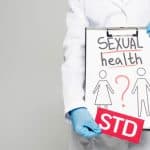Arthritis Advice for Those With Hepatitis C
Editor’s Note: The following material is for educational purposes only and is not intended to supersede or replace a physician’s recommendations.
According to the U.S. Centers for Disease Control, arthritis is the most common cause of disability in America. However, there are many ailments that can dramatically impact life without causing disability, such as the Hepatitis C virus (HCV). Hepatitis C is the most common cause of chronic liver disease and the most common blood-borne infection in the United States. Thus, a significant proportion of people with Hepatitis C also have arthritis.
The liver of someone with HCV has to work extra hard, and usually has a difficult time processing medications. The more a person’s Hepatitis C infection has advanced, the fewer functioning liver cells there are available to metabolize drugs. Because of their liver’s limitations, individuals with HCV and arthritis often seek ways other than drugs to relieve their arthritis pain. By learning about hot and cold therapy, those with arthritis can reap the benefits of what many physical therapists and bodyworkers already know about easing the inflammation, stiffness and pain typical of arthritis.
About Hot and Cold Therapy
Many medical disciplines rely on the physical properties of warmth and coldness to aid the body’s healing process. Heat and ice are the two most common types of passive, non-invasive, and non-addictive therapies for arthritis:
- Hot Packs and Heat Therapy – Heat therapy causes the blood vessels to dilate, essentially drawing blood into the warmed tissues. Increased blood flow delivers needed oxygen and nutrients, and removes cellular waste. The warmth also decreases muscle spasm, relaxes tense muscles, relieves pain and can increase range of motion. Applying heat on an arthritic area can be done in many forms, such as hot packs, hot and moist compresses, dry or moist heating pads, hydrotherapy (hot bath) and commercial chemical/gel packs.
- Cold Packs and Cold Therapy (Cryotherapy) – Cold therapy causes blood vessels to constrict, which slows circulation in the cooled tissues. Slowing the circulation can reduce inflammation, stop muscle spasms and ease pain. Applying cold on an arthritic area can be done in many forms, such as commercial cold packs, ice cubes, iced towels/compresses and hydrotherapy (cold bath).
Instead of reaching for a pill to ease arthritis pain, those with Hepatitis C can do their liver a favor by choosing hot and cold therapy instead.
Choosing the Temperature
As long as safety precautions and the following general guidelines are considered, arthritis joint pain and stiffness can be effectively managed with hot and cold therapy:
- Heat is relaxing – Stiff, tense and sore muscles can be relaxed and relieved with heat. Not only does heat relax muscles, it also stimulates blood flow and improves circulation, helps increase range of motion and reduces stiffness in painful joints. Never apply heat to a joint that is already hot, red and irritated.
- Ice is cooling – When arthritis pain causes a burning sensation, applying an ice pack or bag of frozen vegetables can cool it off. When accompanied by heat and swelling, cold therapy can reduce inflammation. Do not apply cold to a joint that is cold and stiff.
- Safety precautions – To avoid burning the skin, make sure that the temperature is never uncomfortably high or low; place a cloth or towel between the source of heat or cold to prevent burns, do not apply heat to skin that is cut or injured and only apply heat or cold for 20 minutes or less at a time.
- Seek a physician’s guidance – While hot and cold therapy is relatively safe, check with your physician first if you are pregnant, have diabetes or circulation problems.
It can take some experimentation and several attempts to find the best hot and cold therapy to relieve your arthritis pain. Remember, heat helps muscles relax; cold helps to minimize inflammation and pain. However, once you find a hot or cold application that helps manage your arthritis, you no longer need to be concerned about how your HCV-infected liver will contend with pharmaceutical pain relievers.
For more information about some of the drugs most hazardous to HCV, read “Acetaminophen Containing Drugs Pose Danger to Hepatitis” and “29 Potentially Toxic Drugs for Hepatitis C”.
References:
http://arthritis.about.com/od/arthritisthefacts/a/prevalence.htm, Arthritis Prevalence and Statistics, Carol & Richard Eustice, Retrieved January 24, 2010, About.com, 2010.
http://arthritis.webmd.com/heat-and-cold-therapy-for-arthritis-pain, Heat and Cold Therapy for Arthritis Pain, Retrieved January 24, 2010, WebMD LLC, 2010.
http://www.arthritis.org/arthritis-disability-mmwr.php, New CDC Report: Number of Americans with Disability Growing, Retrieved January 24, 2010, Arthritis Foundation, 2010.
http://www.everydayhealth.com/arthritis/heat-and-cold-therapy.aspx?xid=nl_EverydayHealthHealthyAging_20100115, Hot and Cold Therapy for Arthritis Joint Pain, Diana Rodriguez, Retrieved January 24, 2010, Everyday Health, Inc, 2010.
http://www.holisticonline.com/hydrotherapy.htm, Hydrotherapy, Retrieved January 24, 2010, ICBS Inc., 2010.
http://www.spineuniverse.com/treatments/physical-therapy/hot-cold-therapies-pain-discomfort, Hot and Cold Therapies for Pain and Discomfort, Dana L. Davis MPT, Susan Spinasanta, Retrieved January 24, 2010, SpineUniverse.com, 2010.







